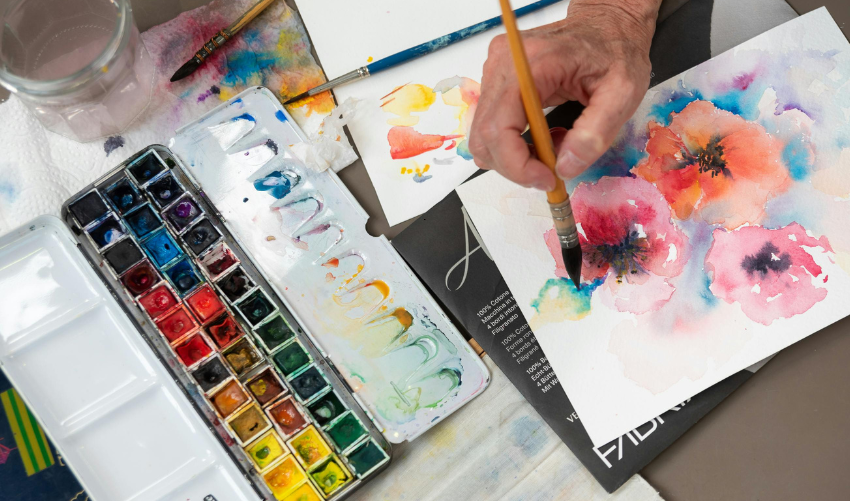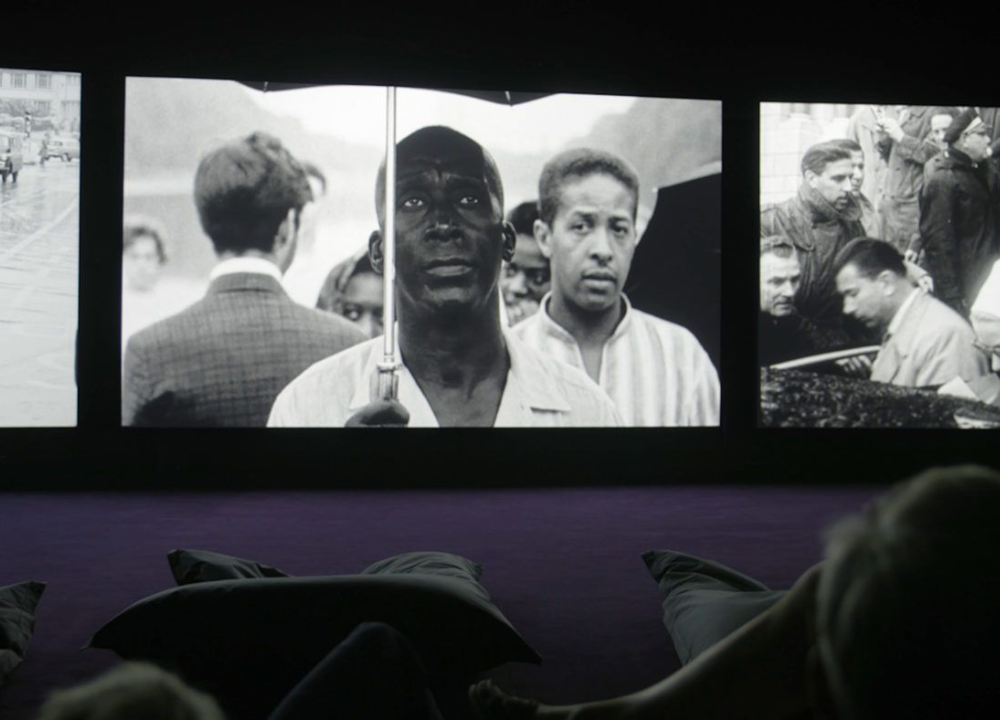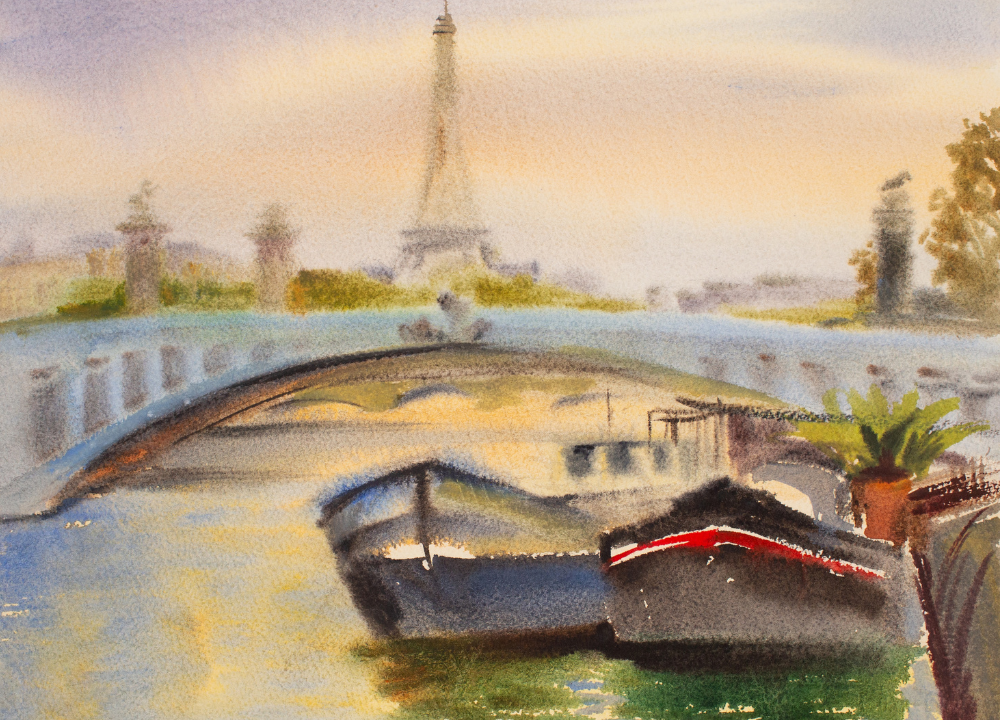Imagine your colors naturally separating and creating beautiful, grainy effects without extra effort. You’ll learn about the best Holbein colors to try, how their granulating properties work, and practical tips to get the most stunning results. Ready to add a fresh twist to your watercolor paintings?
Holbein Granulating Watercolors
Granulating watercolors have pigments that settle unevenly on paper. This creates a speckled or grainy texture. Holbein’s granulating paints are known for their strong and vibrant colors. They provide rich texture without losing brightness.
Popular Colors In Holbein Granulating Range
| Color Name | Effect | Common Use |
|---|---|---|
| Burnt Sienna | Warm, grainy earth tone | Landscapes, skin tones |
| Ultramarine Blue | Deep blue with subtle speckles | Skies, water |
| Viridian | Cool green with textured finish | Foliage, nature scenes |
| Raw Umber | Dark brown with granulation | Shadows, tree bark |
How To Use Holbein Granulating Watercolors
- Choose textured paper: Rough or cold-pressed paper shows granulation best.
- Apply wet-on-wet: Drops of paint spread and granulate naturally.
- Layer carefully: Multiple layers build depth and texture.
- Control water amount: Too much water reduces granulation.
The granulation effect depends on the pigment type and paper texture. Rough papers enhance this grainy look. Smooth papers reduce granulation but still show subtle texture.
Unique Colors In The Range
This texture adds an organic and dynamic feel to artwork. Each color behaves differently, giving artists many options to explore. The pigments in Holbein’s granulating watercolors are carefully chosen to enhance this granulation, making the colors rich and interesting. These unique shades can bring landscapes, skies, and abstract pieces to life with natural patterns and subtle roughness.
Popular Granulating Shades
Holbein’s granulating watercolors include a variety of popular shades that are favorites among artists. These colors produce beautiful textures and depth, perfect for adding realism or creative effects. Some shades granulate strongly, while others offer a more subtle texture. Here are a few popular granulating colors from Holbein:
- Burnt Sienna: Warm and earthy, great for natural landscapes.
- Cobalt Blue: Cool and vibrant, perfect for skies and water.
- Raw Umber: Deep brown with strong granulation for shadows.
- Viridian: A green shade that creates lovely texture on leaves and grass.
- Quinacridone Gold: Bright and shimmering with subtle granulation.
These shades create interesting effects by separating pigment particles as they dry. The granulation adds a tactile look that stands out from flat washes.

Mixing And Matching Colors
Mixing Holbein granulating watercolors can create exciting new textures and colors. The granulation effect changes depending on the colors combined. Some mixes increase granulation, while others soften it. Understanding how these pigments interact helps artists control texture and depth in paintings.
Here are tips for mixing and matching these colors:
- Test small mixes first: Use a palette or scrap paper to see granulation and color before applying to the main work.
- Combine granulating and non-granulating shades: This contrast can highlight textures or smooth areas.
- Layer colors: Apply one granulating color, let it dry, then add another to build texture.
- Use different water amounts: More water softens granulation; less water intensifies it.
Below is a simple guide to common mixing outcomes with Holbein granulating colors:
| Color 1 | Color 2 | Expected Effect |
|---|---|---|
| Burnt Sienna | Cobalt Blue | Earthy muted blue with visible granulation |
| Raw Umber | Viridian | Rich dark green-brown with textured depth |
| Quinacridone Gold | Burnt Sienna | Warm golden brown with subtle shimmer |
Mixing these watercolors opens many creative possibilities. Experiment with various pairings to find textures and shades that fit your style. This flexibility makes Holbein granulating watercolors a favorite among artists who enjoy texture and color variety.
Granulation Effects Explained
The granulation effect happens when pigment particles clump together during drying, creating a grainy, textured look. This effect adds natural variation and depth to watercolor art. Understanding granulation helps artists use these paints more creatively and effectively.
Texture And Depth Creation
Granulation gives watercolors a natural, rough texture that looks like tiny grains or speckles on the paper. This texture adds a sense of depth and richness to your artwork. It is especially useful for painting natural scenes like rocks, soil, tree bark, and skies. The uneven pigment distribution creates a three-dimensional feel on a flat surface.
Some key points about granulation texture:
- Granulating pigmentst end to settle in the paper’s texture, highlighting the paper’s surface.
- The effect varies with paint concentrationand water ratio.
- Different pigments granulate in unique ways, offering varied textures.
- Rough or cold-pressed paper increases granulation visibility.
The table below lists some popular Holbein granulating colors and their texture intensity:
| Color | Granulation Intensity | Best Uses |
|---|---|---|
| Burnt Sienna | High | Earth tones, landscapes |
| Cobalt Blue | Medium | Skies, water |
| Raw Umber | High | Shadows, soil |
| Prussian Blue | Medium | Dark shadows, night scenes |
Using granulating colors lets you create natural variations that look less flat and more lively. It also helps reduce the need for complex brushwork to add texture.
Layering Techniques
Layering granulating watercolors builds interesting textures and enhances depth in paintings. Each layer adds new granulated patterns and colors, creating complexity. This technique works best by applying thin washes and letting each dry before adding more paint.
Steps for layering with Holbein granulating colors:
- Start with a light wash of a granulating color.
- Allow it to dry completely to see the texture clearly.
- Add a second layer with a different granulating color or a more saturated tone.
- Use a damp brush to blend edges if needed, but avoid over-mixing.
- Repeat layering to increase texture and color depth.
Important tips:
- Dry layers fully to keep granulation visible and avoid muddy colors.
- Use transparent layers to let underlying textures show through.
- Experiment with wet-on-wet for softer granulation effects.
- Combine granulating with non-granulating colors for contrast.
This layering approach creates rich, textured paintings with a natural feel. It also allows control over how much texture appears in different areas. Using Holbein granulating watercolors with layering techniques gives your art a unique, tactile quality that stands out.
Application Tips
Understanding how to apply them well can improve your artwork’s depth and interest. The following tips focus on brush choice, water use, and paper type to help you work with these watercolors effectively.
Brush Selection
Choosing the right brush affects how granulating watercolors behave on paper. Brushes control paint flow and texture, so pick brushes that complement the granulating effect.
- Round Brushes: Good for detail and controlled washes. They hold water well and allow smooth color application.
- Flat Brushes: Ideal for broad strokes and washes. They help spread paint evenly and create textured backgrounds.
- Mop Brushes: Excellent for large areas and soft gradients. Their soft bristles hold lots of water, aiding smooth blending.
Brush size matters too. Smaller brushes help with fine details and sharper granulation spots. Larger brushes cover more area and produce softer granulation effects.
| Brush Type | Best Use | Effect on Granulation |
|---|---|---|
| Round | Detail work, washes | Controlled granulation, sharp spots |
| Flat | Broad strokes, backgrounds | Even spread, subtle texture |
| Mop | Large washes, gradients | Soft blending, smooth granulation |
Tip: Use a combination of brushes to add variety to your painting textures.
Water Control
Water amount changes how Holbein granulating watercolors behave on paper. Water controls paint flow, granulation intensity, and color saturation.
Less water means thicker paint. This increases granulation visibility and texture. Paint looks more textured and grainy.
More water creates a lighter wash. Granulation becomes softer and spreads out. Colors appear more transparent.
- Start with a damp brush to pick paint and control how much flows.
- Test paint on scrap paper to see granulation patterns before painting.
- Layer paint after drying for richer granulation effects.
Water control also affects drying time. More water means longer drying, allowing colors to mix naturally. Less water dries fast, locking granulation patterns.
Paper Recommendations
Paper type plays a big role in granulating watercolor results. The paint’s texture reacts differently on various paper surfaces.
Rough paper has a textured surface that enhances granulation. Paint settles into the paper’s grooves, highlighting grainy effects.
Cold-pressed paper is slightly textured and popular for granulating watercolors. It balances absorbency and texture, making granulation visible but smooth.
Hot-pressed paper is smooth and less absorbent. It shows less granulation but works well for detailed work and soft washes.
- Use 100% cotton paper for best absorbency and durability.
- Paper weight of 300 gsm or higher prevents warping from water.
- Try textured papers specifically designed for watercolor.
Note:Testing different papers helps find your favorite look with Holbein granulating watercolors.
Creative Uses
Holbein Granulating Watercolors offer unique textures and rich colors that inspire creativity. These paints create natural grainy effects as pigments settle unevenly on paper. Artists enjoy exploring different ways to use these effects to enhance their work. The granulation adds depth and interest to paintings, making simple scenes look more vibrant.
Landscape Painting
Granulating watercolors are perfect for landscape art. Their natural texture mimics organic surfaces like rocks, soil, and tree bark. These effects bring realism and mood to outdoor scenes. Using Holbein’s granulating paints can add life and detail without extra effort.
Key benefits in landscapes:
- Texture: Grainy patterns replicate natural elements.
- Depth: Layering granulating colors creates distance and volume.
- Atmosphere: Subtle color shifts enhance skies and water.
Try these tips for landscape painting:
- Start with light washes to build color slowly.
- Use granulating colors for foreground details like rocks and grass.
- Experiment with wet-on-wet technique to create soft skies.
- Layer darker granulating shades to add shadows and depth.
| Color | Best Use | Effect |
|---|---|---|
| Ultramarine Blue | Sky and water | Soft grainy texture, adds calm mood |
| Burnt Sienna | Soil and rocks | Rich earth tones with natural granules |
| Green Earth | Foliage and moss | Subtle textured greens, realistic plants |
Abstract Art
Holbein Granulating Watercolors are excellent for abstract paintings. The granulation creates unpredictable, organic patterns.
Benefits for abstract art:
- Unique textures: Each stroke looks different and lively.
- Color blending: Granulating pigments mix to create new shades.
- Visual movement: Grain patterns guide the viewer’s eye.
These natural textures add interest and depth to abstract compositions. Artists can focus on color, shape, and texture without strict forms.




